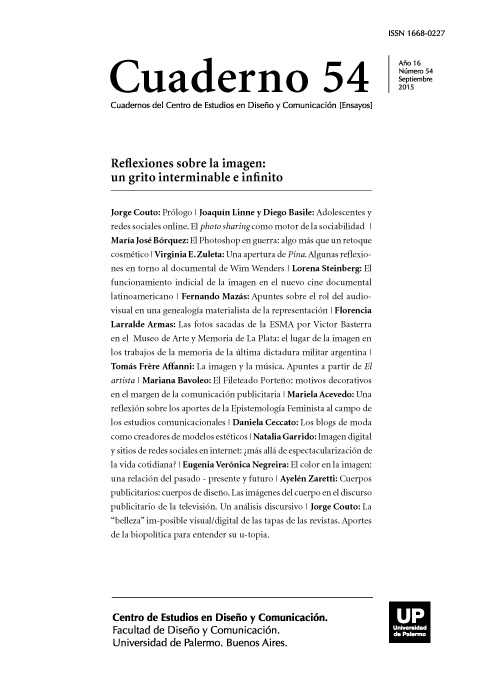El Photoshop en guerra: algo más que un retoque cosmético
Abstract
Nowadays the media provide the basis material of which individuals structure
their uniqueness. Within this area the photographic image plays a key role. It is true that
since its invention in the nineteenth century, it never functioned as a mirror or reflection
of a particular reality and handling long precedes the digital era, but the chances of “fix”
or electronically disrupt the images are greater today than ever, if not almost limitless.
This does not deny that there are certain limits on the use of editing tools like PhotoShop
that seem to be given by certain application areas. It is not the same the fashion retouching
in advertising or to erase wrinkles or physical imperfections that war testimonial photos
to increase, for example, a cloud of smoke. We find a clear example in the photo intervention due to an English photographer of Reuters that caused a scandal of such magnitude
that ended with his dismissal. All this shows that Photoshop is much more than a mere
cosmetic retouching.
References
AA.VV. (1990). Manual de Estilo del diario El País. Madrid: El País.
Alsina, M. (1993). La construcción de la noticia. Barcelona: Paidós.
Aumont, J. (1992). La imagen. Barcelona: Paidós.
Barthes, R. (1982). La cámara lúcida. Buenos Aires: Paidós Comunicación.
Diccionario de la Real Academia Española. Disponible en www.rae.es.
Duras, M. (1984). Outside. Barcelona: Orbis.
García Barroso, J. (1987). Tratamiento de la información en TV. Madrid: Instituto Oficial
de Radio y Televisión.
Millerson, G. (1990). Técnicas de realización y producción en televisión. Madrid: Instituto
Oficial de Radio y Televisión.
Shaeffer, J. (1990). La imagen precaria. Madrid: Cátedra.
Sontag, S. (2004). Imágenes torturadas. En Revista Ñ, Diario Clarín. 29 de mayo de 2004.
(2000). Ante el dolor de los demás. Buenos Aires: Alfaguara.
Verón, E. (1997). De la imagen semiológica a las discursividades: el tiempo de una fotografía. En Isabel Veyrat-Masson y Daniel Dayan (comps.). Espacios públicos en imágenes.
Barcelona: Gedisa.
(1971). Ideología y comunicación de masas: La semantización de la violencia política. En
AA.VV. Lenguaje y comunicación social. Buenos Aires: Nueva Visión.
Vilches, L. (1989). Manipulación de la información televisiva. Barcelona: Paidós.
Los autores/as que publiquen en esta revista ceden los derechos de autor y de publicación a "Cuadernos del Centro de Estudios de Diseño y Comunicación", Aceptando el registro de su trabajo bajo una licencia de atribución de Creative Commons, que permite a terceros utilizar lo publicado siempre que de el crédito pertinente a los autores y a esta revista.


